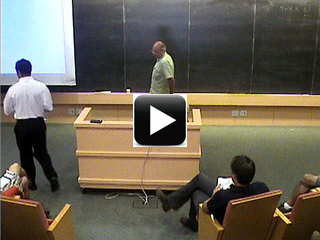The so-called "Above Threshold Ionization" (ATI), is a process in the
course of which a quantum system (atom, molecule,...) absorbs more
photons than strictly necessary for being ionized. Evidenced first in
atoms in the presence of a strong IR laser field, it becomes feasible to
observe it in the x-ray range, thanks to the advent of XFELs and
harmonic-based sources. The objective of the tutorial is to review
various aspects of the theoretical descriptions of the process, from the
perturbative to the non-perturbative regimes, and from the low-frequency
to the high-frequency ranges. Several issues related to "two-color"
(IR-XUV) ionization recent experiments will be also addressed, if time
permits.
 Other video options
Other video options